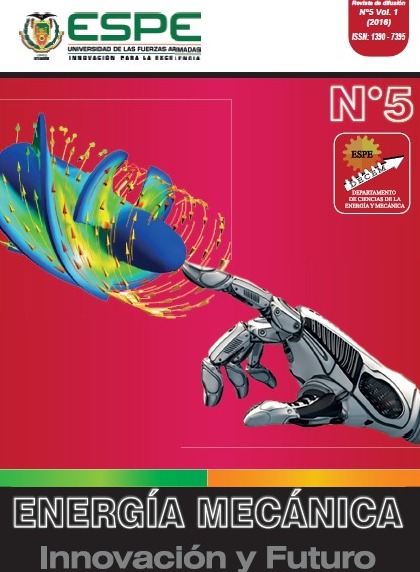SISTEMA DE DIRECCIÓN ASISTIDA HIDRÁULICAMENTE A LAS CUATRO RUEDAS EN VEHÍCULOS AUTOMOTORES HIDRAULICALLY ASSISTED STEERING SISTEM FOR THE FOUR WHEELS ON AUTOMOTIVE VEHICLES
DOI:
https://doi.org/10.24133/EMIF.V5.4i.3955Resumen
La investigación tiene como objetivo
disminuir el radio de giro del vehículo
Volkswagen Santana, la mediante
implementación del sistema de
dirección asistida hidráulicamente a las
ruedas posteriores, complementando
la orientación de las ruedas delanteras,
para proporcionar maniobrabilidad y
agilidad al paso por curva en zonas
concurridas u obstaculizadas, con
capacidad de cambio de dirección y
estabilidad, logrando que el viaje sea
seguro y satisfactorio. Se implementó el
sistema electrónico de reenvío de giro,
que es el encargado de transmitir el par
del volante de la dirección delantera,
hacia un motor de pasos ubicado en la
parte posterior del vehículo, al mismo
tiempo que esta señal electrónica hará
que las ruedas posteriores viren en
sentido opuesto a las ruedas delanteras
del vehículo, las señales electrónicas
son proporcionadas por un PLC que
recibirá información de sensores de
velocidad del vehículo y giro del volante
de la dirección. El motor eléctrico está
acoplado con la válvula distribuidora
del mecanismo de asistencia hidráulica
en el eje posterior, para direccionar las
ruedas posteriores.
Palabras clave
Dirección asistida, vehículo automotor, PLC,
estabilidad, hidráulica.
ABSTRACT
The research aims to reduce the
turning radius of the Volkswagen
Santana vehicle, by implementing the
hydraulically assisted steering system
to the rear wheels, complementing the
orientation of the front wheels, to provide
maneuverability and agility when
driving in crowded areas. Obstructed,
with capacity of change of direction
and stability, making the trip is safe
and satisfactory. The electronic turn
over system was implemented, which is
responsible for transmitting the pair of
the steering wheel of the front direction,
towards a stepper motor located at the
rear of the vehicle, at the same time as
this electronic signal will cause the rear
wheels Turn in the opposite direction
to the front wheels of the vehicle, the
electronic signals are provided by a
PLC that will receive information from
vehicle speed sensors and turn the
steering wheel. The electric motor is
coupled with the distributor valve of the
hydraulic assist mechanism for the rear
axle to direct the rear wheels.
Keywords
Power steering, automotive vehicle, plc,
stability, hydraulic.
[1] Cengel, Y. &Cimbala J. (2011).
Mecánica de Fluidos.México : Mc
Graw Hill.
[2] Creus, N. E. (2011). Hidráulica.
México: Alfaomega.
[3] H.Kindler& M.Kynast (2005).Cálculos
técnicos para el automóvil.Mexico:
Reverte
[4] Mott, R. L. (2006). Mecánica de
Fluidos. México: Pearson Education.
[5] Mott, R. L. (2007). Diseño de
elementos de máquinas. México:
Pearson Education.
[6] Mott, R. L. (2006). Resistencia
de Materiales. México: Pearson
Education
[7] Selección y aplicación de motores
eléctricos WEG (13 de Julio de 2014)
obtenido de :
http://ecatalog.weg.net/files/wegnet/
WEG-selecci
óny-aplicacion-de
motores-electricos-articulo-tecnico
espanol.pdf
[8] Sistema de dirección a las 4 ruedas
(25 de Julio de 2014)obtenido de :
http://www.aficionadosalamecanica.
net/4ws-direccion-4-ruedas.htm
[9] Cuatro ruedas directrices. (04 de
agosto de 2014) obtenido de: http://cuatro-ruedas.blogspot.
com/2011/07/4-ruedas-directrices.
html
Publicado
Número
Sección
Licencia
Los autores que publican en esta revista están de acuerdo con los siguientes términos:
Los autores conservan los derechos de autor y garantizan a la revista el derecho de ser la primera publicación del trabajo al igual que licenciado bajo una Creative Commons Attribution License que permite a otros compartir el trabajo con un reconocimiento de la autoría del trabajo y la publicación inicial en esta revista.
Los autores pueden establecer por separado acuerdos adicionales para la distribución no exclusiva de la versión de la obra publicada en la revista (por ejemplo, situarlo en un repositorio institucional o publicarlo en un libro), con un reconocimiento de su publicación inicial en esta revista.
Se permite y se anima a los autores a difundir sus trabajos electrónicamente (por ejemplo, en repositorios institucionales o en su propio sitio web) antes y durante el proceso de envío, ya que puede dar lugar a intercambios productivos, así como a una citación más temprana y mayor de los trabajos publicados.

